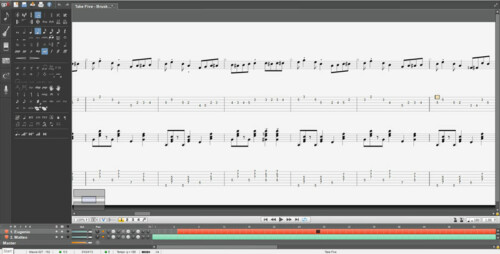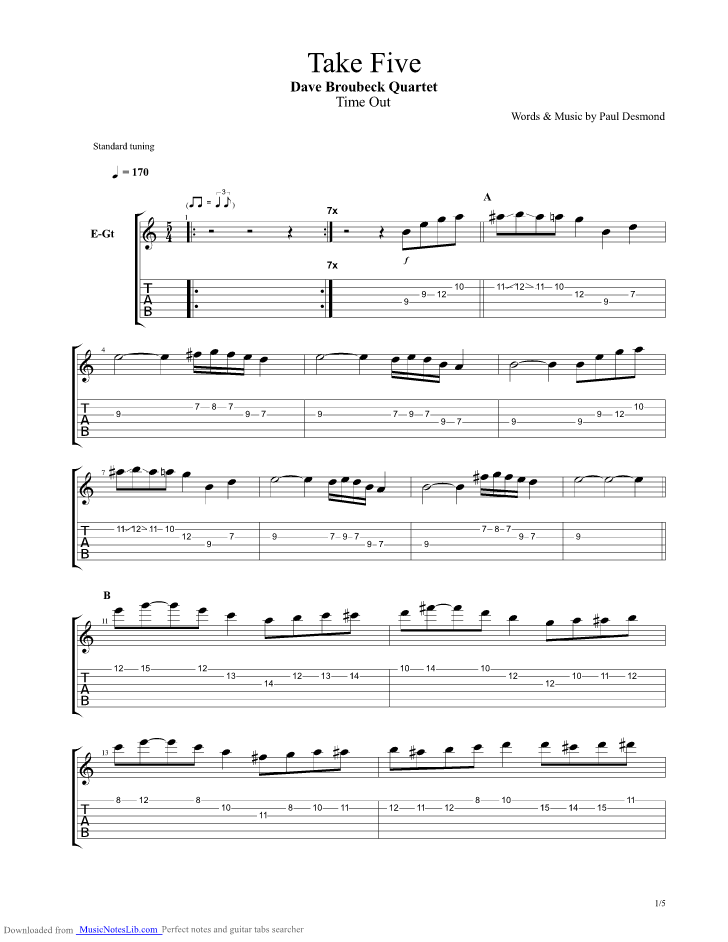
For a guide to improvising, the alto sax soloist should listen to the late and great alto saxophone player and composer, Paul Desmond, who played on the original recording by the Dave Brubeck Quartet. Rhythm sections may benefit from just rehearsing the first 3 beats of the ostinato as a vamp to capture a relaxed, bouncy feeling, and then insert the 2/4 part of the ostinato. This subdivision also makes the 5/4 more playable, as it can be felt as a jazz waltz (3/4) with an extra two beats (2/4). Within the 3-beat subdivision, it is important to notice the dotted quarter rhythm that is implied this defines the swing feel. The ostinato also clearly outlines the 3–2 rhythmic subdivision within the 5/4 bar. In odd meters, there is often a pattern, and this tune has a distinctive rhythmical pattern. Playing in 5/4 meter is not as challenging as it looks. Published textbooks include Concepts for Improvisation (1997) and Acoustic and Midi Orchestration for the Contemporary Composer (2007). Other arrangements have been recorded by Gerry Mulligan, Mel Lewis and Susannah McCorkle.

He also teaches jazz arranging for orchestra at The Juilliard School (NY) and is currently an arranger for Wynton Marsalis and the Lincoln Center Jazz Orchestra. Richard DeRosa Richard DeRosa is the head of the Jazz composition and arranging program at William Paterson University (NJ). It is important for the piano and bass to play the written parts (the ostinato) exactly as written, especially when accompanying the primary theme, as this is a very important component of the composition.

The general expression should be relaxed but there must also be an internal intensity that is inherent in all swing music. The classic recording of this tune is by the Dave Brubeck Quartet, titled Time Out. NOTES TO THE CONDUCTOR Take Five is a composition written just at the end of the “Cool” period in jazz history, which was from 1949 to around 1955. B% Tenor Saxophone (Doubles 1st Trombone) 2nd Baritone T.C.

Optional Alternate Parts C Flute Tuba Horn in F (Doubles 1st Trombone) 1st Baritone T.C. Instrumentation Conductor 1st E% Alto Saxophone 2nd E% Alto Saxophone 1st B% Tenor Saxophone 2nd B% Tenor Saxophone E% Baritone Saxophone 1st B% Trumpet 2nd B% Trumpet 3rd B% Trumpet 4th B% Trumpetġst Trombone 2nd Trombone 3rd Trombone 4th Trombone Guitar Chords Guitar Piano Bass Drums Lots of notes have been left out and others added to make it easier to play.Take Five PAUL DESMOND Arranged by RICH DeROSA Many changes have been made to John Zaradin's original arrangement, including the basic feel. This arrangement is by Sal Bonavita, Copyright © 2006.

It comes from a book called "Popular Songs for the Classical Guitar". " Take Five" is so much the work of Brubeck, Desmond, Gene Wright, and Joe Morello that it has never been covered much by other jazz artists.īased on an arrangement by John Zaradin, Copyright © 1986 by Wise productions. The quartet's " Take Five" (whose haunting, bluesy melody was written by Desmond) was their crossover breakthrough hit in 5/4 time. This was the foursome that was together from 1958 to 1967, featuring the elegantly floating alto saxophone of Paul Desmond, bassist Eugene Wright and drummer Joe Morello. 1920) has for nearly half a century been a major figure as pianist, composer, and leader of perhaps the most widely known and well-traveled quartet in the history of jazz. The first jazz figure ever to make the cover of Time, Brubeck (b.


 0 kommentar(er)
0 kommentar(er)
